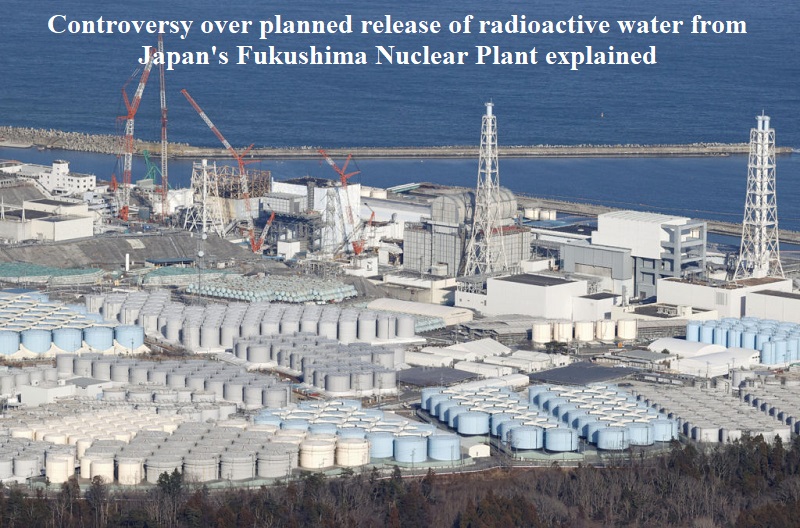
Japan is preparing to release millions of metric tons of treated radioactive water from the tsunami-damaged Fukushima nuclear plant into the Pacific Ocean starting on August 24th, a decision that has met substantial opposition from neighboring nations.
Approximately 1.34 million metric tons of radioactive water, equivalent to filling around 500 Olympic-size swimming pools, have been collected in storage tanks at the site since the 2011 tsunami event. This water will be discharged over a 30-year period, having undergone filtration and dilution.
The execution of this plan has been entrusted to the Tokyo Electric Power Company (Tepco), which operates the nuclear plant. A month ago, Japan’s nuclear regulator authorized Tepco to initiate the water release. Despite concerns voiced by neighboring countries about potential contamination of food sources, both the Japanese government and the International Atomic Energy Agency (IAEA) have labeled the water as “safe.”
The stored radioactive water, approximately 1.3 million metric tons, has undergone advanced liquid processing via Tepco’s system to remove most radioactive elements, with the exception of tritium—an isotope of hydrogen that is difficult to separate from water. This treated water will be blended with seawater, diluting the concentration of tritium to levels below regulatory thresholds before being introduced into the ocean via an underwater tunnel located 1 kilometer from the shore.
Such a practice is a global norm, endorsed by regulatory authorities for handling Fukushima’s water.
Experts affirm that tritium poses minimal harm as its radiation lacks the potency to penetrate human skin. However, when ingested at elevated levels, it can heighten cancer risks.
The multi-decade discharge process will run in parallel with ongoing filtration, dilution efforts, and the nuclear plant’s planned decommissioning.
While Japanese officials and the IAEA assert the safety of the “treated” water, environmental activists highlight concerns, asserting that not all potential impacts have been thoroughly examined.
Japan contends that it must proceed with the release due to capacity constraints in storage tanks.
The United Nations’ nuclear watchdog, which approved the plan in July, affirms that Japan aligns with international standards for discharging the water. It reiterated that the impact on people and the environment would be “negligible.”
On August 23, Greenpeace criticized the lack of comprehensive radiological risk assessment and accused Japan of neglecting the biological consequences of elements like tritium, carbon-14, strontium-90, and iodine-129 that will be released with the water.
Tepco and Japan assert that the filtration process will eliminate strontium-90 and iodine-129, while the concentration of carbon-14 in the treated water will fall well below the regulatory standard for discharge.
The Japanese government document reportedly states that should abnormally high concentrations of radioactive materials be detected, “appropriate measures, including immediate suspension of the discharge,” will be taken.
China and South Korea, among other neighboring countries, oppose the release, with China likening the ocean to a “private sewer” for Japan. Both South Korea and China have already banned fish imports from the Fukushima region.
Hong Kong’s Chief Executive, John Lee, called the move “irresponsible” and announced immediate restrictions on some Japanese food products. This action stems from fears of “impossible risks to food safety and the irreparable pollution and destruction of the marine environment.”
Japan’s second-largest agricultural and fisheries export market is Hong Kong, after mainland China.

Post Your Comments